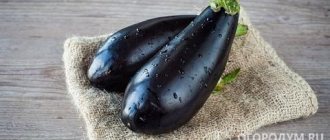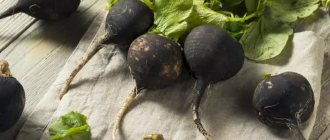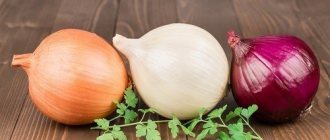Parsley is an aromatic spice, without which almost no fish, meat, first course, as well as salads and appetizers can do. At the same time, greens are valued for their unique mineral and vitamin composition, the presence of bioflavonoids and essential oils.
Thanks to this, the spicy herb helps to increase immunity, improve metabolic processes, vision, strengthen blood vessels, reduce blood sugar and blood pressure.
- 3.1 Drying herbs naturally
It is their usefulness and taste that make greens an indispensable product in cooking. In the summer, finding a sprig of parsley is not difficult, but for the winter you need to prepare green herbs, following the best recipes given in the article.
Attention! Fresh herbs can be stored in the refrigerator for no more than 1 month at temperatures up to 6 degrees. At the same time, the leaves gradually begin to turn yellow, rot and deteriorate, becoming unsuitable for food.
How to keep parsley fresh for the winter. How to store in winter at home?
In winter, greens are stored in the following ways:
- grown on the windowsill,
- stored dry, frozen,
- preparations are made by mixing with table salt, which serves as a preservative.
Growing in boxes
Spices are grown on the windowsill in winter, closer to the light source. In the fall, the roots of parsley, celery, fennel, wild garlic, and onions are harvested.
Prepare dishes 10-15 cm deep. Fill in nutritious soil and plant the harvested roots.
Green beds on the windowsill require regular maintenance. They are watered without overwatering, so as not to cause rotting of the soil. If the air in the room is dry, spray the seedlings with a spray bottle.
At room temperature
You can keep a bunch of parsley or dill purchased at the market at room temperature. Place in a glass of water. The shoots will remain usable for 3-5 days. The water is changed every other day.
Important! Parsley saved in this way quickly loses its vitamin C reserves.
You can bring parsley from the dacha with the roots. Plant it in a pot, tear off the largest leaves. They are used for cooking.
Be sure to read:
5 options for storing beets (beets) in winter: in the cellar, apartment
This is how basil, mint, and arugula are grown. It is better to install pots with them on the balcony.
In a refrigerator
Most often, brought spices are stored in the refrigerator. The lower temperature helps to maintain the turgor of leaves and stems. The longer they stay there, the less vitamins they contain.
Wrap the workpiece in a paper towel or craft paper and moisten it. Tied with polyethylene. To allow air to flow inside, several holes are pierced. You can make them using a fork.
The optimal temperature for storage in the refrigerator will be 0…+10 °C. The best place is the bottom shelf.
The freezer preserves products longer. The taste of dill and parsley lasts until spring, but the amount of vitamins is reduced. Therefore, it is advisable to lay aside a reserve for a couple of months and then renew it.
Parsley with salt
In addition to the above methods of preparing parsley for the winter, you should pay attention to unusual recipes, for example, the method of dry pickling of herbs.
Ingredients:
- Greens – 1 bunch
- Salt – 1 tbsp.
Pickling parsley is very easy, following the step-by-step recipe:
- Prepare washed and dried greens.
- In a ceramic (glass) container, mix parsley and salt. Grind the mixture until the juice is released with a wooden pestle.
- Pour the resulting mixture into a glass jar, close with a nylon lid and store in the refrigerator.
Since salt is a natural preservative, this product will be stored longer.
Attention! You can also salt parsley with whole leaves. To do this, place the herbs and salt in layers in a glass jar. After the herb releases its juice, you can seal the jar and store it in a cool place.
Greens with salt
How to preserve parsley in the garden in winter. How to preserve parsley in the garden until winter? Discovering secrets
Many people eat greens from their gardens, including parsley. How can you ensure that when the cold weather sets in, you can have fresh parsley on your table for as long as possible?
With the arrival of frost, the greens die and begin to turn yellow. But parsley as a crop is not afraid of cold weather. Adult bushes can withstand low temperatures - down to minus 10..minus 12 degrees. It freezes, but thaws again. But, of course, it cannot withstand lower temperatures.
Parsley has good winter hardiness. In mid-latitude conditions, with early snowfall and a large layer of snow, both underground and above-ground parts of plants often overwinter. But lately, snow can only be expected before the New Year.
To preserve parsley, gardeners resort to various tricks.
Parsley is planted in different places and at different times. For example, one bed is used for salads and various preparations, which was planted in early spring. Another bed begins to be used later, and it is intended for the fall, and is even used in December (before severe frosts).
To extend the life of parsley, make a shelter. They put arcs on top, cover them with an old blanket, a rug, and use film on top. During the day, the shelter is removed if the temperatures still allow, and at night the plantings are covered. In late autumn, they do not open it at all (or slightly raise the cover (material) for ventilation for a couple of hours), the greens remain juicy and green for a long time, even without light. Curly, corrugated varieties are especially well preserved.
If the area for parsley is very small, then place cardboard boxes on the bed and cover the top with film. Thus, it will last for 1-2 months. If December is relatively warm, then it is possible to keep parsley under cover until January.
Preparing parsley for storage
Most types of green grasses have very thin and delicate covering tissue that does not retain moisture well. For this reason, even large leaves, such as lettuce, sorrel or spinach, quickly lose their juiciness and wither. In order not to be upset about a spoiled product, you need to take into account all the nuances and remember how to store fresh herbs of different varieties. Before storing the grass, it needs to be prepared. If you want to prolong the freshness of green onions, garlic, parsley or dill, it is not advisable to wash them first.
Trending Pilaf with chicken and shrimp
Use a dry cloth to remove any remaining soil from the bunches and remove any yellowed leaves. If heavily soiled, you can rinse the herbs in a basin or deep bowl, but not under running water. Then dry them well: shake them off carefully, lay them on a towel, blot off excess water and leave to dry for half an hour. After the grass has dried, it is ready for long-term storage.
How to preserve parsley for a long time. How to store parsley? How and where to store parsley for a long time
It will not be possible to store parsley fresh for a long time, so it is salted, pickled, dried or frozen. To pickle greens, take 150 g of salt per 1 kg. The parsley needs to be washed, dried, cut with a sharp knife, mixed with salt, placed in jars, and compacted. Add more salt to the bottom of the jar and on top of the greens, cover the jar with parchment paper, tie it tightly around the neck, and store it in a cool room. This method of harvesting allows you to preserve all the beneficial properties of greens.
Or you can do it differently: preserve the parsley in brine. To do this, the chopped greens need to be placed in jars, poured with hot (70 - 80 degrees) brine, kept at room temperature for several days, skimming off any foam that forms, then closed with lids and refrigerated. For brine, take 30 g of salt per 1 liter of water. You can do everything in one go, then the prepared greens with brine just need to be sterilized and rolled up with lids. Spicy seasoning is often prepared in this way by adding other herbs and garlic to the parsley. You can pour the herb with a marinade of water (1 l), salt (50 g), sugar (50 g), vinegar (200 g).
Storing parsley in oil also perfectly preserves its quality for 3 to 4 months. You need to pour the prepared chopped greens in a jar with hot vegetable oil and close the lid. This method of preparation allows you to preserve not only the taste and smell, but also the appearance of fresh herbs, so it is good to add it to salads.
Important Tips and Recommendations
Fresh parsley always has a bright aroma and good taste. It is ideal for a variety of meat and vegetable dishes. It can be used in the preparation of salads, as a spice for many dishes, such as rolls, casseroles. It is also widely used in cooking as a seasoning and combined in various marinades. In addition, with its help you can decorate and diversify your regular diet, the dishes will become even more appetizing and attractive.
Helpful Tips:
- Parsley can be stored fresh in the bottom section of the refrigerator or in the vegetable drawer for no more than 1 month. After this period, the foliage will begin to wither and turn yellow. Rhizomes last longer and can be freshened. To do this, you need to soak the root vegetables in cold water for one hour, and then dry them thoroughly and put them back in the refrigerator.
- In the freezer, if you freeze several herbs in separate bags or containers, it will not be clear which contains parsley and which, for example, contains cilantro, so it is recommended to label them or place a piece of paper on which the type of herb is written in a container with herbs.
- When freezing with water (portion method), you can use butter or vegetable oil. This addition would be an excellent option for dumplings, cereals, vegetables or salads.
- When freezing, you can use more than just parsley, but several varieties of greens, to create a spicy seasoning. For example, you can add dill, cilantro, green onions, chopped garlic, basil, mint and other spices.
- When salting with regular salt without adding marinade, after the greens are placed in jars, it is necessary to leave free space, since the salt will dissolve and juice will be released.
- If parsley is dried correctly, it should have a rich green color. If there are yellow and brown shades, this indicates that the technology has been broken.
- To make the drying process go faster and more evenly, the greens must be turned over and tossed periodically.
- The best way to store dried parsley is in tightly closed glass jars or foil bags. They do not allow moisture to penetrate and retain the aroma.
You can buy various types of greens in any stores and supermarkets, but when you have them at hand, it is much more convenient.
How to dry parsley for the winter. Frozen parsley: preparation methods and benefits
You can freeze parsley and store the aromatic plant in the freezer to enjoy the healthy greens during the winter months. There are three methods on how to properly freeze parsley for the winter:
- in cling film;
- in ice briquettes;
- in packages.
Procedure for how to properly dry parsley at home for frozen storage:
- Rinse the above-ground part carefully with cool running water and remove the coarsened part of the plant.
- Place in a colander or spread on cloth napkins, allowing the water to drain or be absorbed. You can use an electric dryer.
- Finely chop the dried stems and leaves, tear them with your hands or grind them in a blender. You can form bunches by twisting several plants together and tying them with thread.
- If you pack parsley in cling film: divide the green mass into portions, wrap, pack, and keep in the freezer at a temperature of -16°C.
- To prepare greens in the form of beautiful ice blocks, distribute the finely chopped raw materials into molds, pour warm boiled water into the recesses of the container, let cool and put in the freezer.
In the solid state of the crop, its healing characteristics remain active for up to 12 months and the piquancy of fresh herbs is preserved. Portioned ice cubes with herbs are dipped into broths and soups a few minutes before they are ready, and bundles frozen in cling film are used for preparing salads and are suitable for serving first and second courses before serving.
Important.
To preserve nutritional properties and vitamins, avoid re-freezing.
Advantages of freezing over other methods:
- preserves the shape, color and smell of fresh plants;
- preserves the healing characteristics and activity of microelements;
- saves time;
- stored for up to one year.
Harvesting parsley for the winter at home is a simple process. You just need to determine what is acceptable for yourself.
When to collect greens?
When collecting parsley for harvesting, you should consider several important points:
Harvested greens
- Cut greens before flowering. At this time, the leaves are soft and fragrant, and the plant itself retains all its beneficial substances in the leaves and stems.
- Collect grass in sunny weather, after the morning dew has dried.
- After harvesting, immediately sort through the parsley, discarding dry and yellowed branches.
Before harvesting, regardless of the method chosen, the greens must be washed thoroughly and poured into a colander. Then spread the grass on a kitchen towel and leave until completely dry.
How to preserve greens for the winter without freezing. Freezing chopped greens
For example, what do you freeze for the winter? I just use parsley and dill. But in your freezer, celery, parsley, and basil will easily last until spring. So I’m ready to share with you my experience on how to freeze greens for the winter.
Of course, no one will put a whole bunch of greens just brought from the market into the freezer. And you should not use withered bunches. Buy the best celery and basil and try to process them as soon as possible.
The faster the greens freeze, the better they retain their beneficial substances and aromas. It is clear that rough stems will freeze longer than thin leaves, and chopped greens will freeze faster than whole leaves.
Therefore, when you bring the fragrant “brooms” home, do this as quickly as possible:
- separate the bundles;
- wash the greens thoroughly;
- spread out to dry in a thin layer for about half an hour until completely dry;
- cut off the coarsest stems;
- Use a thin knife to chop the greens as you like;
- place the greens in small plastic bags;
- you can immediately make a “herbal cocktail” from your favorite plants;
- place the bags in the freezer set to freeze mode;
- Shake the bags every half hour to prevent the leaves from sticking together.
That's all. The size of the bag and the selection of grass is entirely your decision. You can even freeze green onions if they grow especially fragrant at your dacha and in especially large quantities. In any case, it will contain more vitamins than the consumptive February one.
So it's very simple. But if you are too lazy to do this, then there is an even simpler way.
Beneficial properties of parsley
Fragrant green leaves are an inexhaustible source of vitamins, including vitamin D3 and minerals, thanks to which a person is protected from illness, stress, depression, and creates mood and peace of mind.
Positive properties:
- strengthens the immune system;
- reduces the amount of salt in the body;
- reduces the risks of developing diabetes and cancer;
- stabilizes the functioning of the heart muscle;
- strengthens bone tissue;
- improves the functioning of the digestive system;
- restores thyroid function;
- suppresses the feeling of hunger;
- increases potency.
30 g of chopped parsley will increase the content of vitamins B in the body by 10%, C by 50%, K by 550%.
Attention! Parsley is not only a decoration for dishes and an aromatic spice, but also a supplier of minerals necessary for the normal functioning of the human body.
How to preserve parsley for the winter at home. The first preparation method is freezing.
Perhaps the best way to prepare greens at home is to freeze them. When exposed to low temperatures, the usefulness, aroma, and taste of the herb are not lost. In addition, when freezing parsley in whole bunches or branches, the process requires a minimal amount of time and effort.
Freezing in whole bunches
Components:
- Parsley – 5 bunches
The algorithm for preparing spicy herbs in bunches is as follows:
- Sort through freshly picked greens, remove dry, damaged and spoiled leaves and blades of grass.
- Cut off the roots from the greens.
- Rinse the grass under running water and shake off excess moisture.
- Spread the parsley on paper or cotton towels and dry.
- Divide the finished herb into small bunches necessary for preparing one dish.
- Wrap the bunches in cling film or place in plastic bags, releasing the air.
- Place the preparations in the freezer for storage. Properly harvested greens will maintain the health, appearance and texture of fresh grass throughout the year.
Freezing parsley
In the same way, you can freeze parsley roots by washing them, sorting them, drying them and packaging them in plastic bags.
Freezing chopped greens
When you need to prepare a small amount of parsley for portioned dishes, you can use the proposed recipe as a basis. To do this you need to use ice cube trays. After freezing, the grass will turn into spicy cubes for seasoning first courses, stews, and casseroles.
Attention! Cubes of frozen parsley are also used for cosmetic purposes to rejuvenate facial skin, get rid of age spots and freckles. In this case, it is better to replace purified water with lemon juice.
Ingredients:
- Greens – 2 bunches
- Water – 100 ml.
Procurement process:
- Sort through, wash and dry the greens. Cut off the tails.
- Chop the harvested green part of the parsley with a knife or crush it with a blender along with the stems.
- Using a teaspoon, scoop the greens into ice containers. Add a teaspoon of boiled water to each serving to compact the greens.
- Place the ice trays in the freezer for long-term storage.
Attention! To make a spicy dressing for dumplings, fried potatoes, dumplings or pasta, you need to fill the molds with herbs with olive or melted butter.
The simplest way to freeze finely chopped greens is to separate the herbs into ziplock bags and put them in the freezer. The only downside of this option is that the parsley needs to be packaged in small portions for one dish, otherwise the preparation will turn into one big green “lump”.
Method two - drying greens
Dried grass, like frozen grass, does not lose its beneficial and spicy qualities when harvested. In addition, it is more convenient to store dried parsley, since the product will significantly decrease in size when dried. And a summer spice added to any dish in winter can improve the taste and aroma of the dish.
Drying herbs naturally
Let's take a closer look at how to dry parsley naturally, without using special equipment or an electric dryer.
Ingredients:
- Grass – 10 bunches.
Process for preparing dried spices:
- Rinse the collected greens with running water and dry on towels.
- Separate the green twigs from the stems. Scatter the greens on a towel or paper in an even layer.
- Place the workpiece in a well-ventilated and dry place. Dry the grass for two days. Stir the leaves periodically to ensure even drying.
- Place the dried herbs in a glass container and seal with a lid. Store parsley in a cool, dark place away from other spices so that the herb does not become saturated with foreign odors.
Drying herbs in the oven, microwave, electric dryer
You can dry parsley not only in the air, but also by using the oven. In this case, you can dry the green leaves either separately or together with the tails or roots. For this:
- Prepare the greens in advance in the same way as the previous recipes. Cut the rhizomes into small cubes or circles.
- Heat the oven to 60 degrees.
- Pour the parsley preparation onto a baking sheet wrapped in parchment. Place the sheet in the oven. Stir the greens periodically.
Dried parsley
Attention! Keep the door slightly open when drying.
- The degree of readiness of a spice is determined by its appearance.
- After drying, place the greens into glass jars and seal them with lids.
Similarly, parsley can be dried in an electric dryer at a temperature not exceeding 60 degrees in order to preserve the maximum of the beneficial substances that make up the herb.
Attention! You can dry the greens in the microwave at maximum power. In this case, the drying process will take 5-6 minutes. After this, the dried herb should be ground with your hands and poured into sealed containers with lids.
How to tell if parsley has gone bad
All preparations must be inspected periodically throughout the entire storage period. Dried parsley is considered spoiled if it begins to turn black or has mold in it. Removing only part of the product will not help, because harmful spores spread throughout the entire mass.
The pickled spice has gone bad if the color of the brine has changed. If it turns white, the product should be thrown away. The same thing happens with the workpiece in oil. Spoiled, salted and frozen parsley begins to turn black.
Recipe for greens in marinade
Another popular way to prepare parsley for the winter is pickling. The cooking recipe is more complex than the previously described preparations, but the result is worth it.
What ingredients will you need?
For the preparation you need to take:
- parsley – 320 g;
- vinegar 9% – 85 ml;
- granulated sugar – 40 g;
- kitchen salt – 35 g;
- water – 500 ml;
- garlic – 4 cloves;
- bay leaf - to taste, usually 1-2 pcs.
Step-by-step cooking process
Algorithm of actions:
- The parsley must be washed well and finely chopped.
- Garlic should be passed through a garlic press or simply grated.
- After this, everything should be mixed, and the prepared mixture should be filled into pre-sterilized jars.
- Pour water, vinegar into the pan, add bulk ingredients and bay leaf.
- The resulting marinade must be brought to a boil and the process continued for 10 minutes.
- Without removing the pan from the heat, you need to pour the boiling marinade into the jars. You can use a ladle for this. You need to pour it very carefully, little by little, so that the jar does not burst due to temperature changes.
- Filled jars must be covered with lids and placed in a saucepan, having previously covered the bottom with a towel and filled with water to the level of the necks of the jars.
- You need to sterilize for 20 minutes over low heat.
- At the end of the process, you need to carefully remove the jars from the pan and roll them up.
- The rolled up jars should be turned upside down, set aside and wrapped in a warm blanket for 12 hours.
It is recommended to store pickled parsley in a basement or cellar. It perfectly retains most of its beneficial qualities, despite heat treatment.
Benefits of parsley and contraindications
In folk medicine, the root part and shoots of parsley are used, and medicinal decoctions are prepared based on them. Parsley is taken for diseases:
- stomach;
- duodenum
- liver;
- kidney;
- organs of the genitourinary system;
- thyroid gland.
Note. Parsley stimulates appetite, normalizes metabolism, strengthens blood vessels, stops inflammatory processes, and has a good effect on visual acuity and the condition of the gums. In cosmetology, decoctions are used to stimulate hair growth and strengthen hair follicles.
Contraindications for use:
- diseases of the bladder, stomach, liver and kidneys in the acute stage;
- increased tone of the uterine muscles during pregnancy;
- exceeding the recommended dosage when preparing and consuming medicinal decoctions leads to dizziness, nausea, and vomiting.
Preparing parsley, harvesting
Before you start preparing spices, you should understand the peculiarities of harvesting and preparing greens for storage. You need to choose healthy plants; the leaves should be a rich dark green shade. It is recommended to stock up for the winter throughout the warm season - this will not affect the taste and beneficial properties, the main thing is to collect high-quality raw materials, without signs of pests and diseases.
If you plan to harvest greens and rhizomes, it is better to start digging the crop in the fall. It is at this time that the spice accumulates in the underground part the maximum amount of elements beneficial to health.
Divide the collected parsley into parts - leaves separately, free the roots from sand and soil, rinse and dry. Act carefully so that the soil does not get on the curly leaves - it will be difficult to wash it out.











